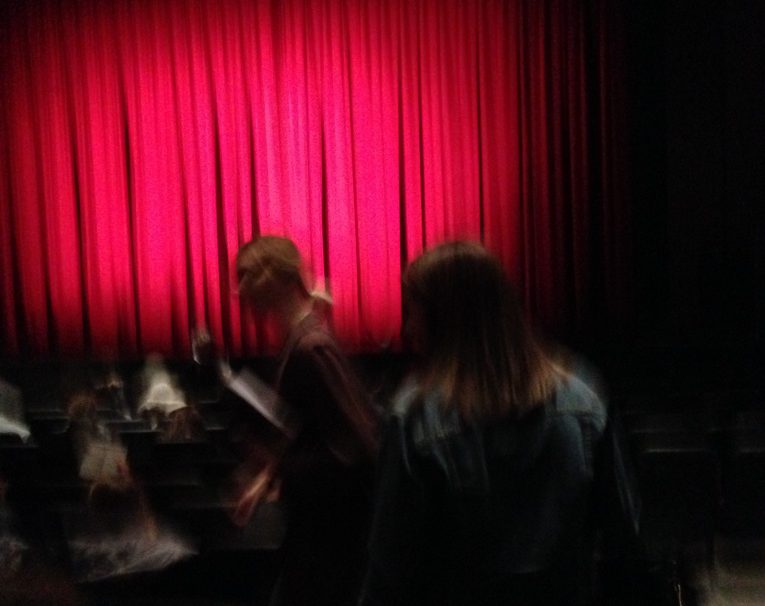COVID-19 has changed many things in our lives, and performance is no exception. Before March 2020, we were able to gather in large groups in small spaces to experience a theatrical, musical, or other type of performance. Now when we view performances, they’re livestreamed and we’re sitting in the comfort of our homes, and can be watched from anywhere in the world.
Marlis Schweitzer, professor and chair of the department of theatre, recounts her memories of what performance used to be like.
“I love the feeling that comes from sharing a unique experience with a group of people — often but not always strangers — and knowing that this feeling will never be the same, even if the show runs for weeks or months,” Schweitzer says.
“ I miss hearing other people’s reactions — the hush that comes over an audience when the lights go down, the breath of anticipation, and the sound of communal laughter. I miss seeing other people’s faces when the show is over, and looking to see whether their experience was anything like mine.”
Ashley D’Souza, a second-year music student, misses the energy that an audience brings. “People forget that the audience is such a big part of any gig; their energy is so infectious for performers and there’s really no comparison to it in the virtual setting,” he says.
While we wish we could attend in person, virtual entertainment has offered more opportunities to watch renowned performances, which we wouldn’t otherwise have had access to.
Abbey Richens, a second-year dance student, explains how this past year has offered her opportunities to connect from afar.
“I was able to take online Gaga dance classes and watch performances that took place all around the world, where normally you would have to buy a plane ticket and actually go to the place to see a show or take a class from a specific person. The dance community has become a lot more accessible,” Richens says.
This new “normal” has forced performers to create within these new constraints, which has presented a lot of new creativity. This might mean more digital exploration or more collaboration between artists.
“I think the amount of collaboration during quarantine has been awesome and it’s something I definitely see continuing,” adds D’Souza.
“Dance has been extremely resilient during these times, artists are proving that they can still create meaningful work during a worldwide pandemic…that is empowering as an emerging artist.”
When COVID-19 is under control, how will things return to normal? What is performance going to look like after safety restrictions are lifted?
“The future of performance is digital and I expect that we’ll continue to see experimentation with digital tools both online and in hybrid (online and in-person) settings,” predicts Schweitzer.
Schweitzer also expects that theatre artists will find new ways to work together in person. This might mean large scale outdoor productions or small scale intimate shows with only a handful of people.
“In the future, I see shows being live streamed online and companies relying more on their online presence. I am excited to see how these experiences translate to a post-COVID-19 dance world,” adds Richens. “Dance has been extremely resilient during these times, artists are proving that they can still create meaningful work during a worldwide pandemic. I have produced work and presented it online, creating a presence for myself in the dance community — it is empowering as an emerging artist.”
While D’Souza can’t wait until it is safe to play in front of an audience again, he thinks that it will take a lot to get used to being around so many people. “I know for me personally, I get a little uncomfortable being around a lot of bodies right now, even though cases are down in my area, and I expect it to continue for the first few months post-pandemic,” says D’Souza.
While the future might be obscure, performers at York and beyond have demonstrated their abilities to maintain strong and positive attitudes as they learn how to adapt.
“This last year has led theatre artists and other performers to think deeply about what they value most in theatre, and to develop new skills and new approaches to their art,” says Schweitzer.
While we’re all anticipating the day we can once again see a live performance or participate in one, the future of performance might maintain a digital approach while also offering intimate, in-person experiences. Regardless of what the future holds, it can be said for certain that the performing arts can and will prevail.


